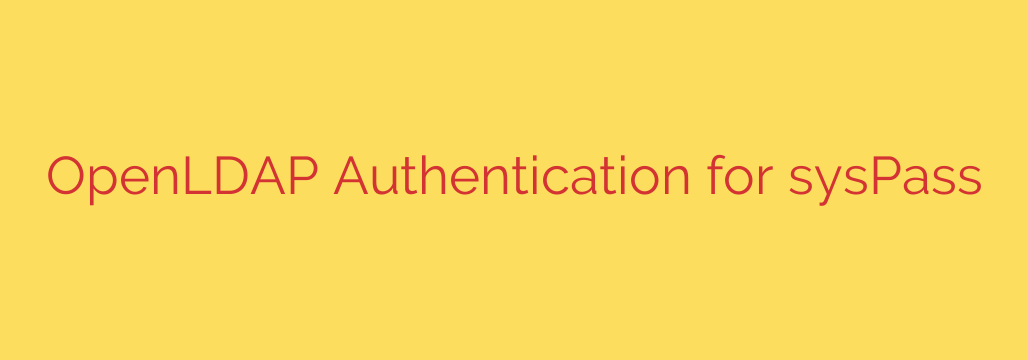
Integrating a directory service like OpenLDAP with your password management solution offers significant benefits, streamlining user management and enhancing security through centralized authentication. This process allows users to access sysPass using their existing network credentials, promoting a single sign-on experience and reducing the need to manage separate passwords for sysPass itself.
To configure OpenLDAP authentication within sysPass, you typically start by navigating to the system’s configuration settings, specifically looking for Authentication or LDAP options. You’ll need to enable LDAP authentication as an active method.
The core configuration involves providing details about your OpenLDAP server. This includes the server hostname or IP address, the port number (commonly 389 for standard LDAP or 636 for secure LDAPS), and selecting the appropriate protocol (LDAP or LDAPS). For enhanced security, using LDAPS is highly recommended as it encrypts the communication between sysPass and the directory server.
You will likely need to configure how sysPass binds to the OpenLDAP server to perform user lookups. This can be an anonymous bind (less secure, often disabled on modern servers) or a bind DN and password. If your OpenLDAP server requires authentication to search the directory, you must provide the Distinguished Name (DN) of a user account with sufficient permissions to read user information and its corresponding password.
A crucial step is defining the Base DN. This is the starting point in your directory tree where sysPass will begin searching for user entries. Specifying a Base DN limits the search scope and improves performance.
Next, you’ll configure the user search filter. This LDAP filter tells sysPass how to find a specific user based on the username they enter during login. Common filters use attributes like uid={username} or sAMAccountName={username}, depending on your directory schema.
Attribute mapping is also important. You’ll need to map attributes from the OpenLDAP user entry (like cn, givenName, sn, mail) to corresponding fields within sysPass, such as full name and email address. This ensures that when a user authenticates via LDAP, their sysPass profile is populated with the correct information from the directory.
Many systems, including sysPass, offer options for user creation or synchronization. You can often configure whether sysPass should automatically create a new user account if an authenticating LDAP user doesn’t already exist in sysPass, or simply authenticate existing sysPass users against LDAP.
After configuring these settings, it’s essential to test the connection and authentication. Most systems provide a test function where you can enter a username and password to verify that sysPass can connect to the server, bind successfully, find the user, and authenticate them.
Successfully integrating OpenLDAP authentication centralizes identity management, simplifies user access, and enhances the security posture of your password management deployment.
Source: https://kifarunix.com/integrate-syspass-with-openldap-for-authentication/








